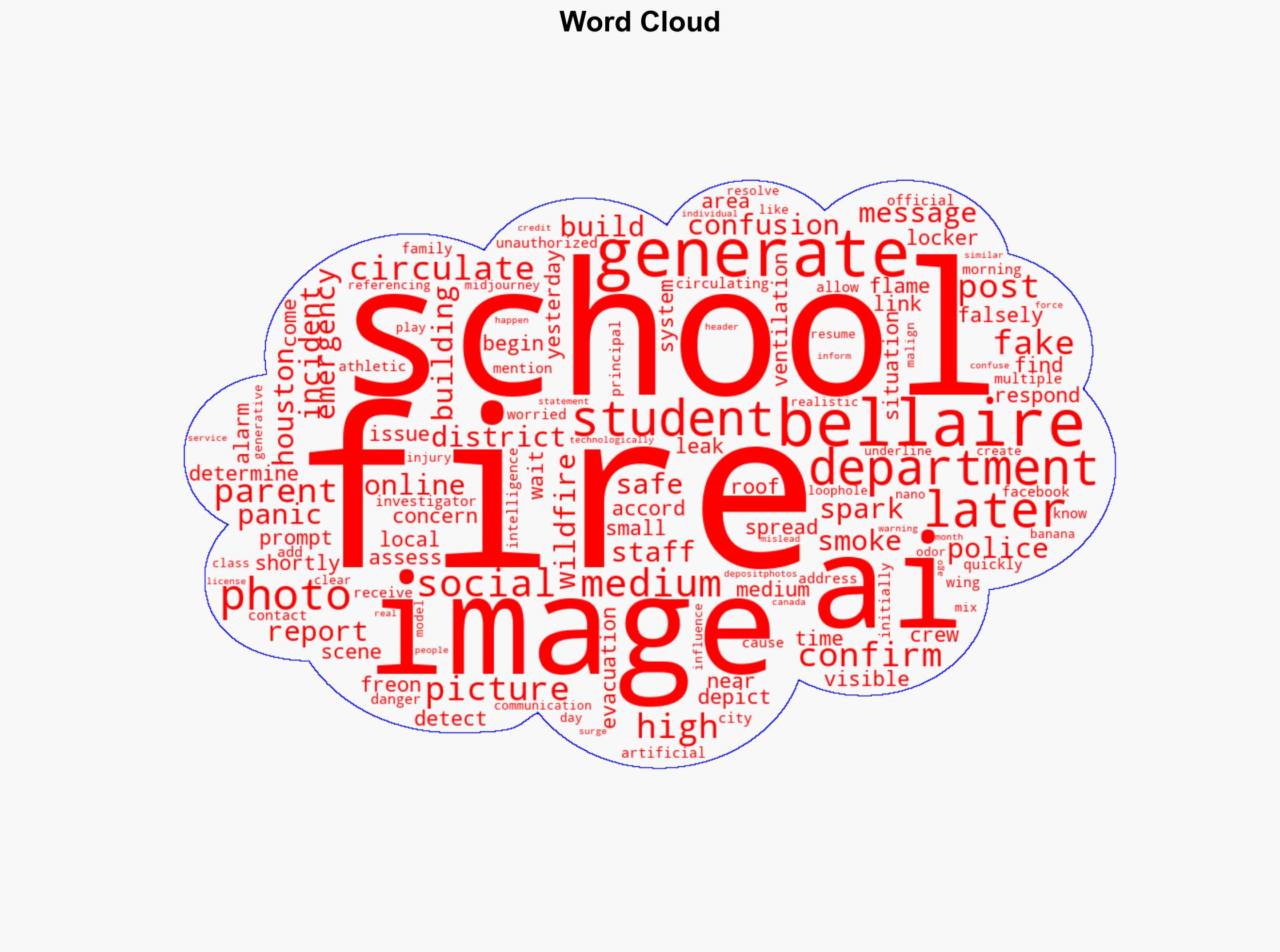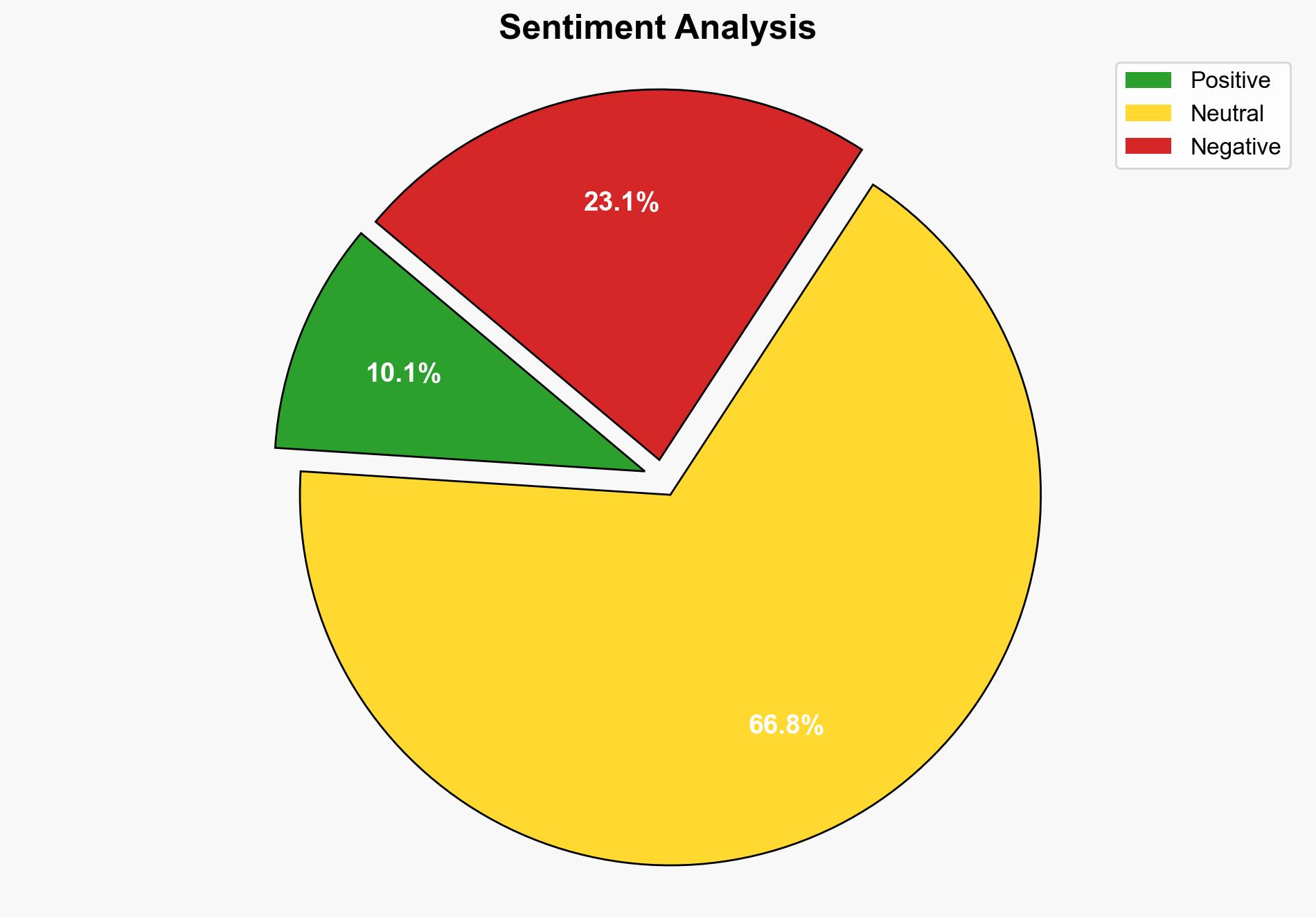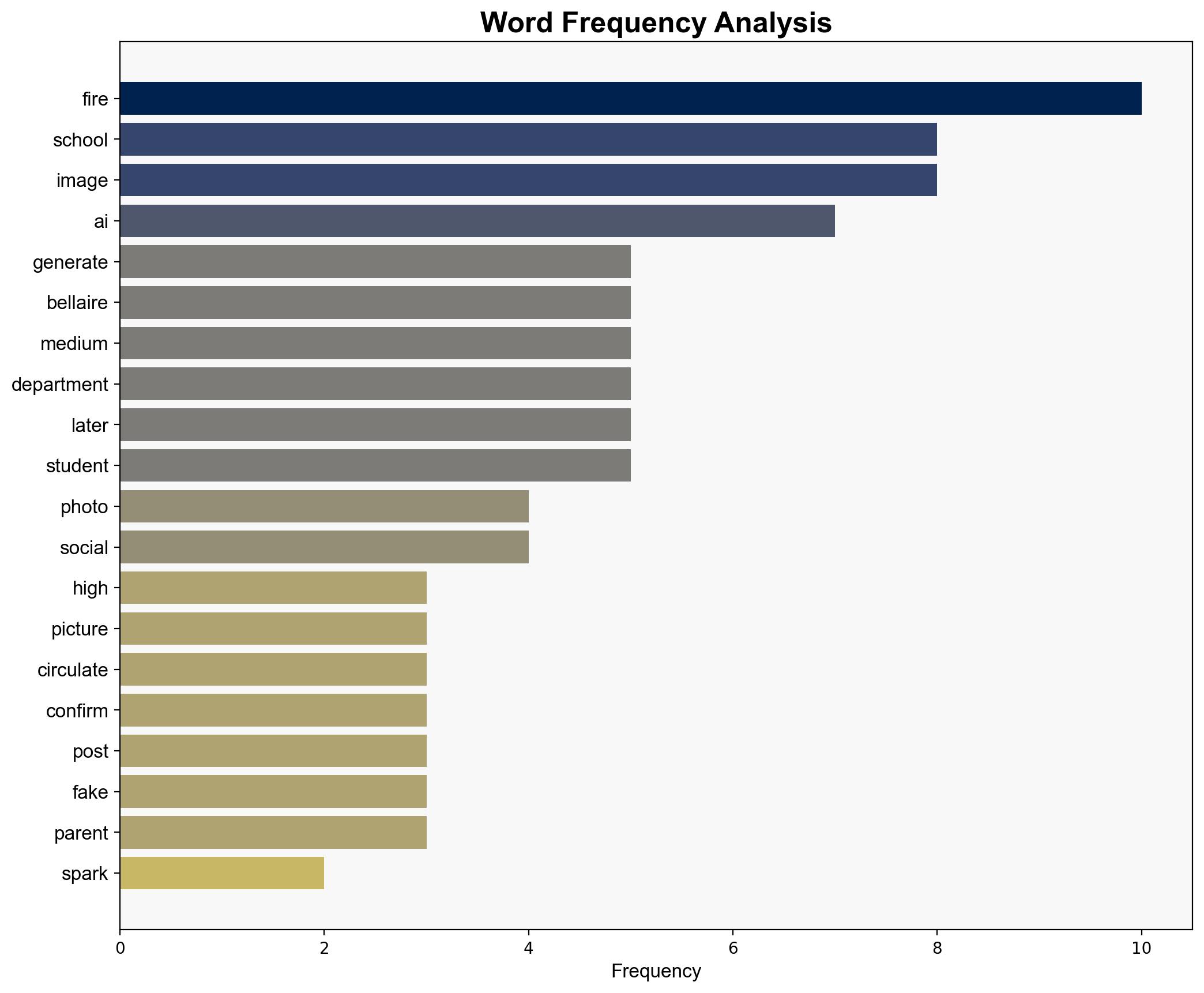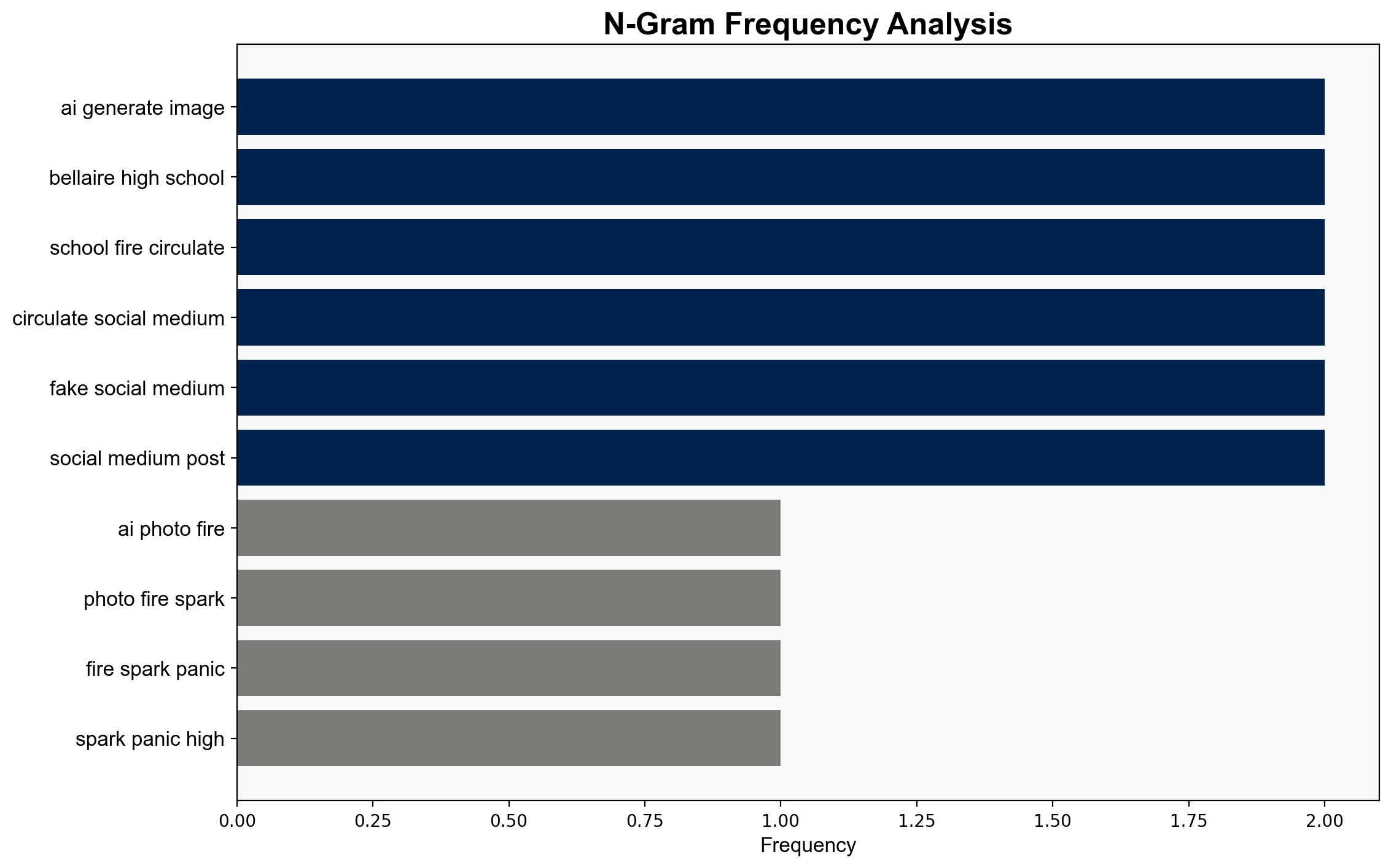AI Photo of a Fire Sparks Panic at High School – PetaPixel
Published on: 2025-11-11
AI-powered OSINT brief from verified open sources. Automated NLP signal extraction with human verification. See our Methodology and Why WorldWideWatchers.
Intelligence Report: AI Photo of a Fire Sparks Panic at High School – PetaPixel
1. BLUF (Bottom Line Up Front)
The most supported hypothesis is that the AI-generated image of a fire at Bellaire High School was an unintended consequence of technological misuse, leading to confusion and panic. Confidence level: Moderate. Recommended action includes enhancing public awareness about AI-generated content and improving communication protocols during emergencies.
2. Competing Hypotheses
Hypothesis 1: The AI-generated image was a result of malicious intent to cause panic and disrupt school operations.
Hypothesis 2: The image was inadvertently generated and circulated, with no malicious intent, due to a lack of awareness about the potential impacts of AI-generated content.
Hypothesis 2 is more likely given the absence of evidence suggesting deliberate targeting or specific threats against the school. The incident aligns with a broader pattern of AI misuse due to insufficient public understanding of AI capabilities.
3. Key Assumptions and Red Flags
Assumptions: The AI-generated image was not part of a coordinated attack. The public and school officials were not prepared for AI-generated misinformation.
Red Flags: Rapid spread of the image on social media without verification. Multiple calls from concerned parents indicate high panic levels.
Deception Indicators: The image’s realistic nature and the timing with the actual school alarm could suggest a potential for misuse in more targeted scenarios.
4. Implications and Strategic Risks
The incident highlights the potential for AI-generated misinformation to cause real-world panic and disrupt emergency response efforts. This could lead to increased distrust in digital content and strain on emergency services. If not addressed, similar incidents could escalate into broader informational threats, impacting public safety and trust in institutions.
5. Recommendations and Outlook
- Enhance public education on recognizing AI-generated content and its potential impacts.
- Develop and implement robust verification protocols for emergency communications.
- Collaborate with social media platforms to flag and manage AI-generated misinformation.
- Best-case scenario: Increased awareness and improved protocols reduce the impact of similar incidents in the future.
- Worst-case scenario: Continued misuse of AI-generated content leads to widespread panic and erosion of trust in emergency communications.
- Most-likely scenario: Incremental improvements in public awareness and response protocols mitigate the impact of future incidents.
6. Key Individuals and Entities
Bellaire High School administration, Houston Fire Department, Bellaire Police Department, Social media platforms.
7. Thematic Tags
Cybersecurity, Misinformation, AI Ethics, Emergency Management
Structured Analytic Techniques Applied
- Adversarial Threat Simulation: Model and simulate actions of cyber adversaries to anticipate vulnerabilities and improve resilience.
- Indicators Development: Detect and monitor behavioral or technical anomalies across systems for early threat detection.
- Bayesian Scenario Modeling: Quantify uncertainty and predict cyberattack pathways using probabilistic inference.
- Narrative Pattern Analysis: Deconstruct and track propaganda or influence narratives.
Explore more:
Cybersecurity Briefs ·
Daily Summary ·
Methodology





